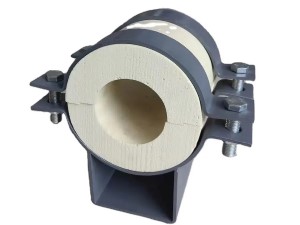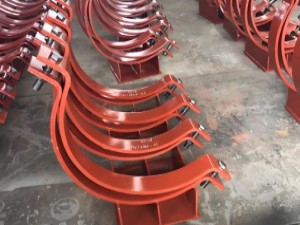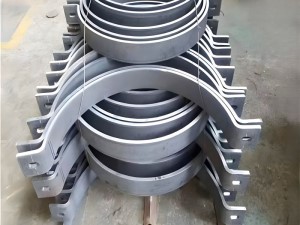Welded Tube
As the name would suggest, a welded tube is made by connecting one end of a metal sheet or plate to the opposite end and welding it together. To connect the ends to join together, the metal is formed longitudinally using a series of metal rolls, where at the end of the rolling stations, welds are made and the two sides of the material are joined. The welding processes used vary depending on the material type, thickness, and tube manufacturer preference. Common processes include resistance welding, high frequency induction welding, and laser welding. After the material has been welded into the tube shape, the newly formed tube is cut to specific length and the excess weld material is removed.
Seamless Tube
A seamless tube is metal tube that does not rely on welding and can be formed through several different processes. One popular process for manufacturing a seamless tube is through rotary piercing. To perform rotary piercing, a solid cylindrical billet of metal is given a small indentation in the center of one of its faces. The material is then fed through a roller system, typically using mechanical or hydraulic force. The outer rollers shape the outside diameter of the seamless tubing and the inner die, called the piercer roll, is aligned with the small indentation and forms the inner diameter. With certain materials, the billet will be heated before this process in order to improve formability.
After the initial inner diameter and outer diameter are formed, they are typically not the exact dimensions required for the final tube product. Therefore, a mandrel is then fed through the newly formed inner diameter of the seamless tube. Then the seamless tube is fed through several other sets of dies to get it to the final desired shape. Subsequent processes, such as annealing, can be used to improve the mechanical properties of the seamless tube. A cutting process is also used to achieve the desired length.
The Benefits Of Welded Tube
The main benefit of welded tube is that it is generally more economical to purchase. This is driven by the lower costs needed to manufacture welded tube compared to seamless tube. Welded tube can generally be made faster, reducing the cost. The faster production time also means welded tube also typically has reduced the lead times when ordered.
The Benefits Of Seamless Tube
Seamless tube, while generally more expensive, has several benefits over welded tube. Many of its benefits stem from the uniformity of its composition, as it has no welded seam. In general, the uniformity promotes increased corrosion resistance, higher tensile strengths, and a greater resistance to pressure when compared with welded tube. In addition to creating a more uniform tube, the seamless tube manufacturing process also lends itself well to thick wall applications.
Common Uses of Welded Tube
Welded tube is often used in applications that do not require extreme service, but may require very accurate dimensions, such as architectural applications. It is also a great choice for general use tubing in a variety of industries because of its affordability and ability to be quickly manufactured.
Common Uses of Seamless Tube
Seamless tubing is used in applications that have critical strength requirements, such as key components of industrial machinery. Seamless tube may also be used in conditions that require high amounts of corrosion resistance like some oil and gas extraction or chemical processing environments.





